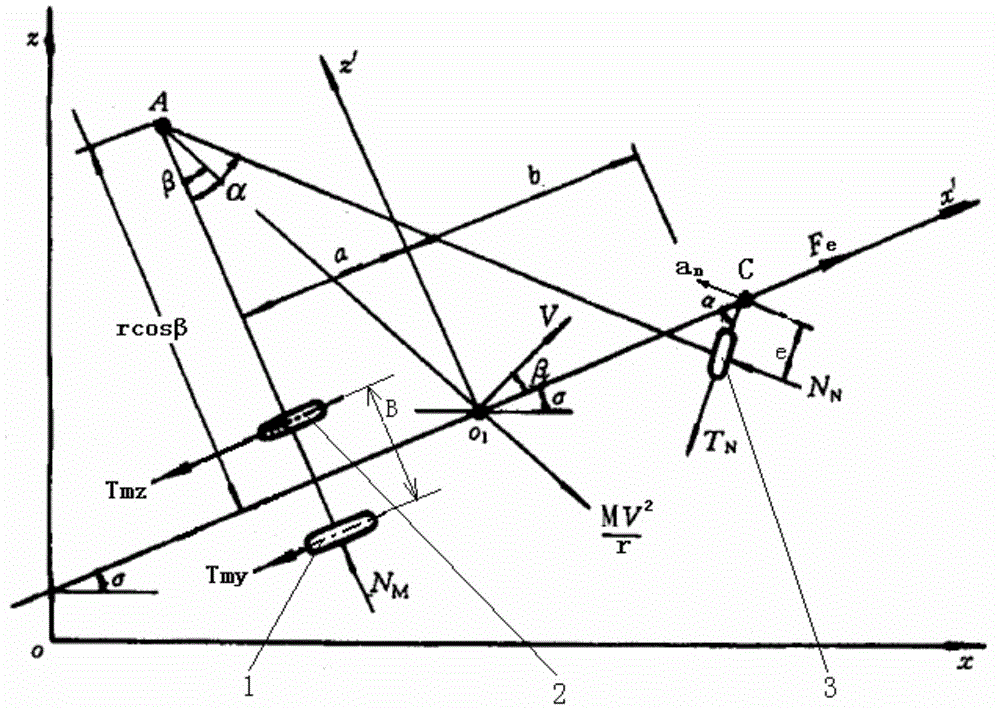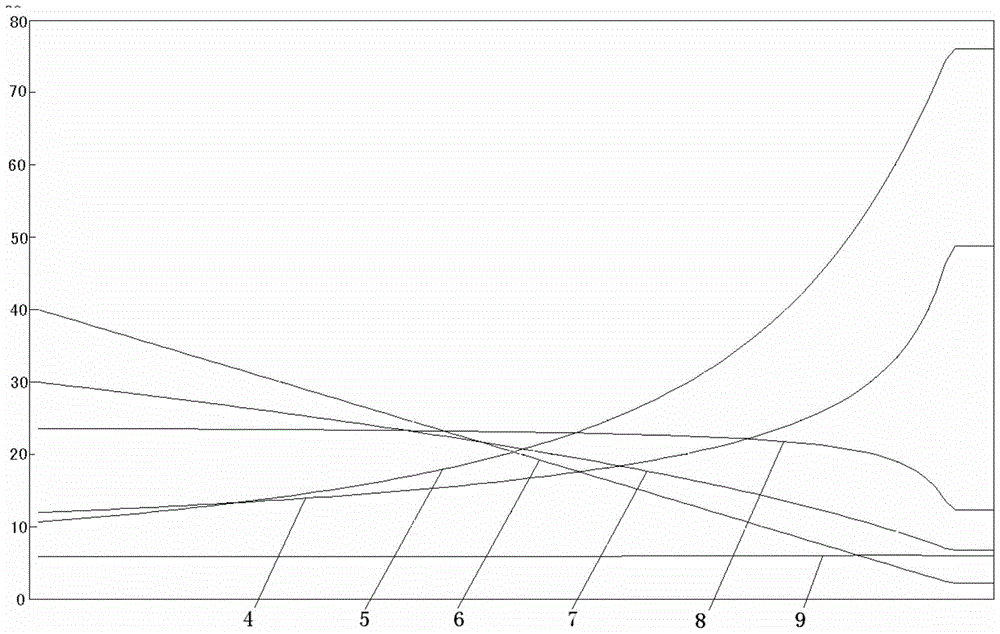A Method of Using Differential Braking to Control the Extreme Turn of Aircraft
A brake control and aircraft technology, applied in the direction of aircraft brake arrangement, brake regulator, etc., can solve the problem of safety hazards that cannot meet the requirements of fast turning
- Summary
- Abstract
- Description
- Claims
- Application Information
AI Technical Summary
Problems solved by technology
Method used
Image
Examples
Embodiment 1
[0085] This embodiment is a method for a certain type of aircraft to achieve extreme turning control only through differential braking when the maximum allowable friction coefficient μ between the tire and the runway is 0.3 under the current taxiing conditions. The specific process is:
[0086] Step 1, determine the maximum allowable friction coefficient under the current taxiing condition of the aircraft. The maximum allowable coefficient of friction μ is comprehensively determined according to the runway conditions, the pilot's control experience, the urgency of the turning task, tire conditions and weather conditions. Maximum allowable coefficient of friction μ = 0.3 ~ 0.6.
[0087] In this embodiment, there is water on the runway, and the pilot's control experience is average, so it is determined that the maximum allowable friction coefficient μ between the tire and the runway is 0.3 under low-speed taxiing conditions.
[0088] Step 2, set up the motion and dynamics equat...
Embodiment 2
[0137] In this embodiment, when the maximum allowable friction coefficient μ between the tire and the runway is 0.4, a certain type of aircraft realizes extreme turning control only through differential braking, and the specific process is the same as that of Embodiment 1. specifically is:
[0138] Step 1, determine the maximum allowable friction coefficient under the current taxiing condition of the aircraft. The maximum allowable coefficient of friction μ is comprehensively determined according to the runway conditions, the pilot's control experience, the urgency of the turning task, tire conditions and weather conditions. Maximum allowable coefficient of friction μ = 0.3 ~ 0.6.
[0139] In this embodiment, the runway is relatively wet and the experience level of the pilot is average, so it is determined that the maximum allowable friction coefficient μ between the tire and the runway is 0.4 when taxiing at a low speed.
[0140] Step 2, establishing the motion and dynamic ...
Embodiment 3
[0147] This embodiment is a method for a certain type of machine to realize extreme turning control only through differential braking when the maximum allowable friction coefficient μ between the tire and the runway is 0.5, and the specific process is the same as that of embodiment 1. specifically is:
[0148] Step 1, determine the maximum allowable friction coefficient under the current taxiing condition of the aircraft. The maximum allowable coefficient of friction μ is comprehensively determined according to the runway conditions, the pilot's control experience, the urgency of the turning task, tire conditions and weather conditions. Maximum allowable coefficient of friction μ = 0.3 ~ 0.6.
[0149] Although the runway in this embodiment is relatively good, the experience level of the pilot is average. In order to ensure safety, the maximum allowable friction coefficient μ between the tire and the runway is determined to be 0.5 when taxiing at a low speed.
[0150] Step 2,...
PUM
 Login to View More
Login to View More Abstract
Description
Claims
Application Information
 Login to View More
Login to View More - R&D
- Intellectual Property
- Life Sciences
- Materials
- Tech Scout
- Unparalleled Data Quality
- Higher Quality Content
- 60% Fewer Hallucinations
Browse by: Latest US Patents, China's latest patents, Technical Efficacy Thesaurus, Application Domain, Technology Topic, Popular Technical Reports.
© 2025 PatSnap. All rights reserved.Legal|Privacy policy|Modern Slavery Act Transparency Statement|Sitemap|About US| Contact US: help@patsnap.com



